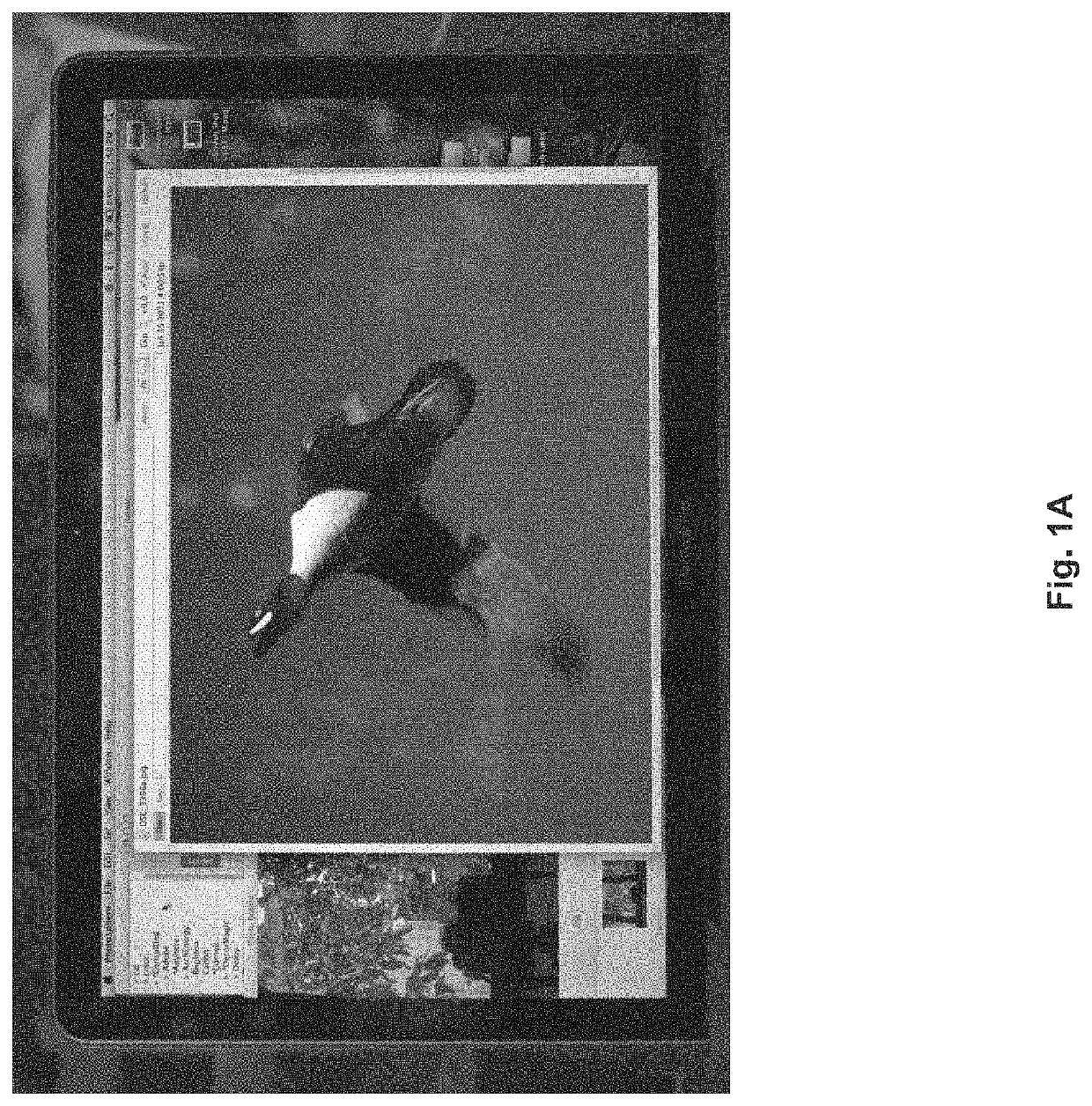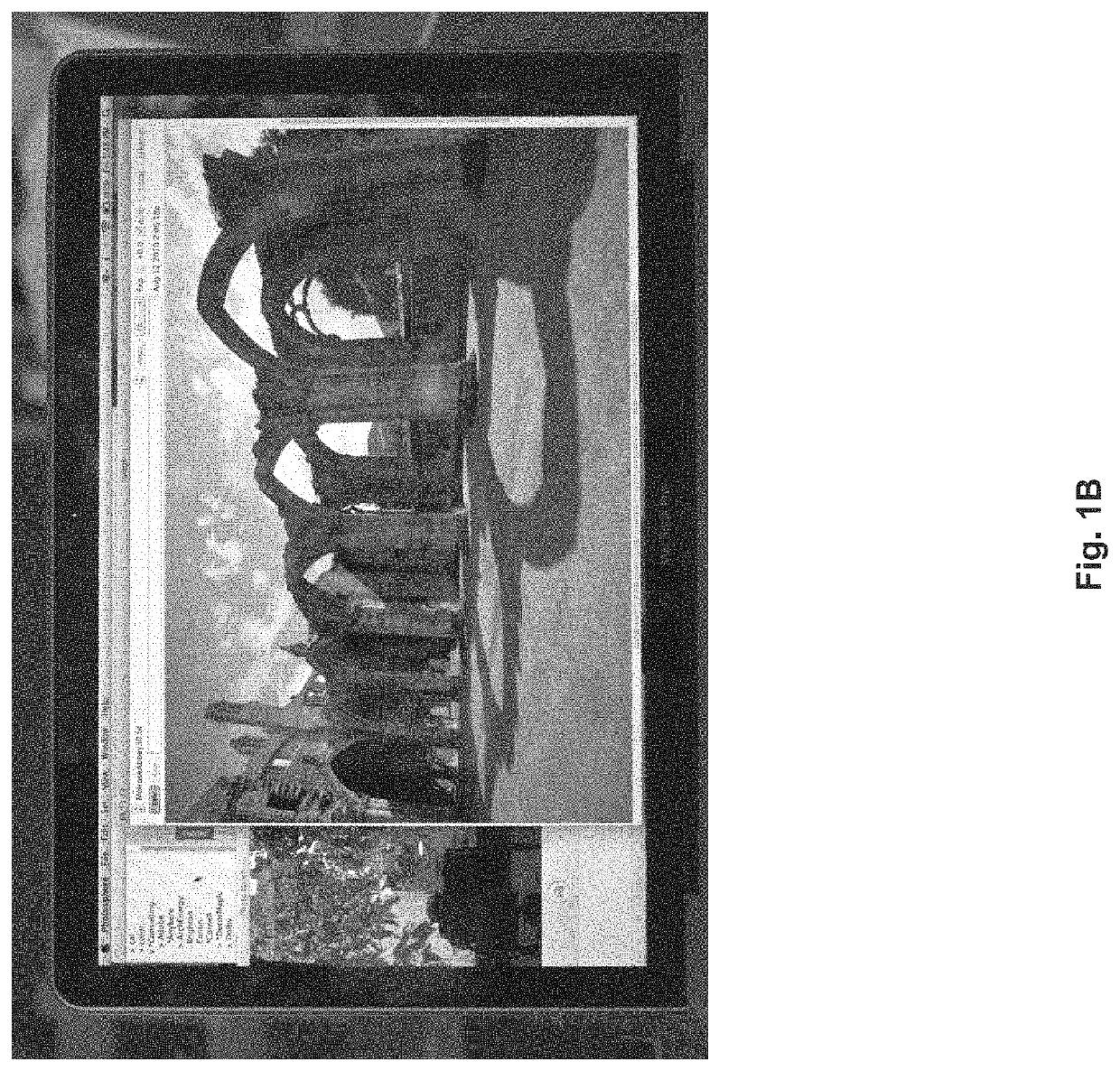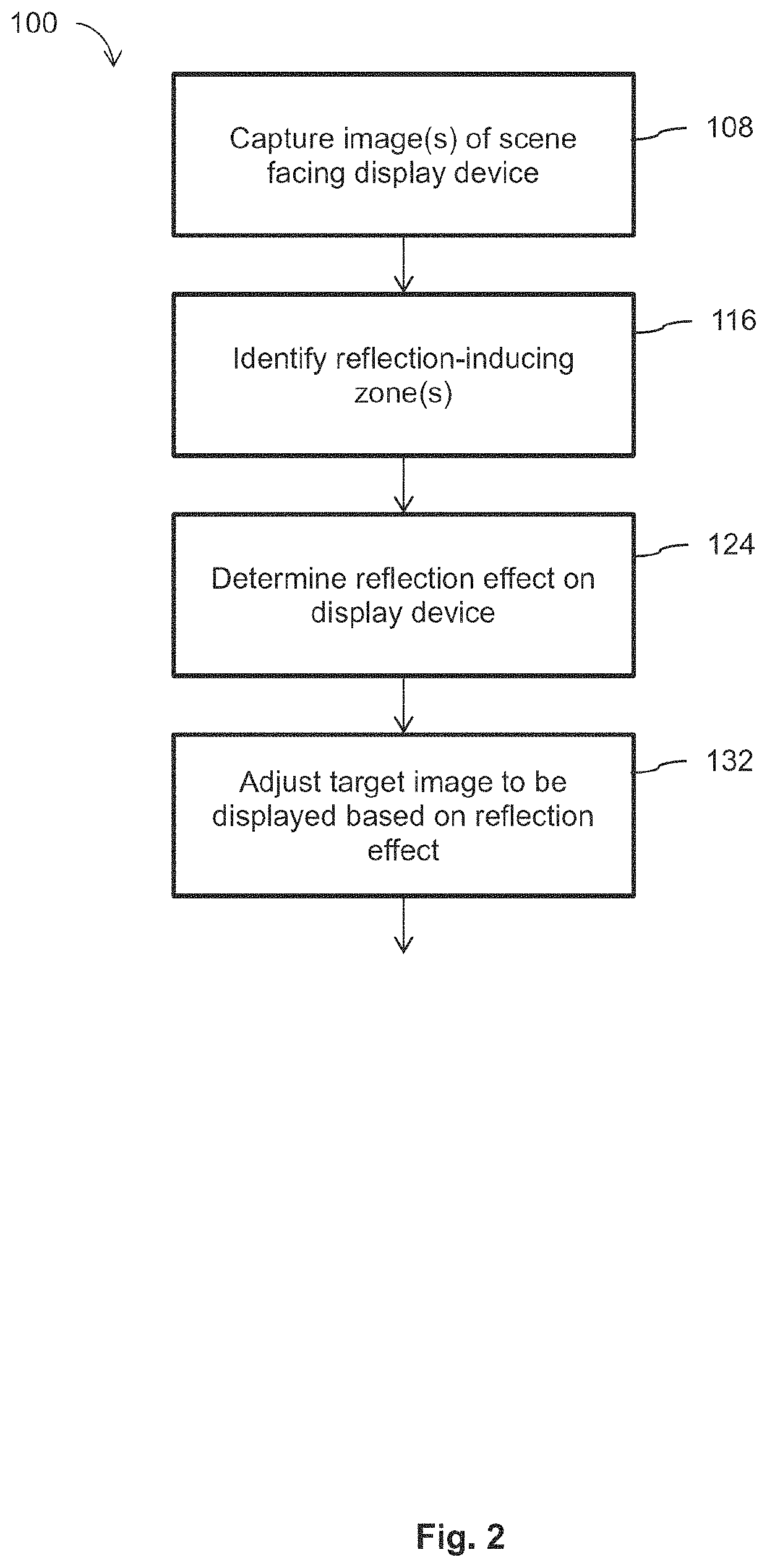System and method for compensation of reflection on a display device
a display device and compensation system technology, applied in image analysis, image enhancement, instruments, etc., can solve the problems of speculative reflection, further confusion of a person's view, and difficulty in viewing conten
- Summary
- Abstract
- Description
- Claims
- Application Information
AI Technical Summary
Benefits of technology
Problems solved by technology
Method used
Image
Examples
example implementation 1
[0090]The basic concept is to take continuous video, ambient light and motion sensor data from a mobile device, and use it to deduce in real-time the current reflections seen by the user on his or her screen. The head position is simultaneously tracked in order to reproject the bright regions as seen by the front-facing camera.
[0091]The main challenge with veil subtraction lies in the accurate prediction of the reflection image as seen from the viewer's perspective. If the reflection image is in the wrong place, the results may be deteriorated due to subtracting the wrong veil, as shown in FIGS. 8a and 8b. Veil estimation requires (a) knowing where the viewer's eyes are located and (b) knowing the brightness and position of significant reflection sources are, both relative to the display.
[0092]In one example implementation, it is assumed that the device being used is equipped with a front-facing camera, an ambient light sensor, and motion sensors to provide when and how the display ...
example implementation 2
Creating a Demo for Automotive Display Applications
[0127]The automotive application is a constrained subproblem that avoids the need to estimate the distances to highlight boundaries in the scene, since the rough geometry of the vehicle is known. The viewer's head position still needs to be tracked based on front-camera data. For example, Android comes with built-in calls that perform this task.
[0128]The viewer's eye position together with the camera field of view and position with respect to the display area are used to reproject bright region locations to where they are expected to appear in the reflected screen. This step is performed on a pixel-by-pixel basis in over-threshold regions of the captured image, but at a reduced resolution to maintain responsiveness. In this situation, shifts in the viewer's head position and changes in the scene behind the viewer are responded to. Some delay (ex: on the order of fraction of seconds) is acceptable.
[0129]The example implementation see...
example implementation 3
Modifying Demo for Mobile Applications
Single-Viewer Head-Tracking
[0137]With input from orientation sensor and front-facing camera, track viewer's head based on likely / possible viewing configurations. Use head-size and / or eye spacing to estimate distance and associated silhouette boundary.
Digesting Motion-Sensor Input
[0138]Access motion-sensor and develop robust method for detecting “parallax shifts” in plane of display as needed for boundary distance determination. Learn to discriminate between in-plane shifts and the more common rotations that occur as a user holds the device naturally while interacting and viewing content. Use recorded front-facing video to evaluate performance of motion-tracking analysis.
Estimating Highlight Region Boundaries
[0139]Using thresholding technique, identify bright region boundaries and use perpendicular in-plane motion to estimate distances and connect contours as needed where distances are unreliable. Check against measurements.
Live Tracking
[0140]Use...
PUM
 Login to View More
Login to View More Abstract
Description
Claims
Application Information
 Login to View More
Login to View More - Generate Ideas
- Intellectual Property
- Life Sciences
- Materials
- Tech Scout
- Unparalleled Data Quality
- Higher Quality Content
- 60% Fewer Hallucinations
Browse by: Latest US Patents, China's latest patents, Technical Efficacy Thesaurus, Application Domain, Technology Topic, Popular Technical Reports.
© 2025 PatSnap. All rights reserved.Legal|Privacy policy|Modern Slavery Act Transparency Statement|Sitemap|About US| Contact US: help@patsnap.com



